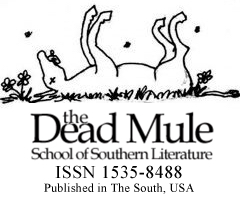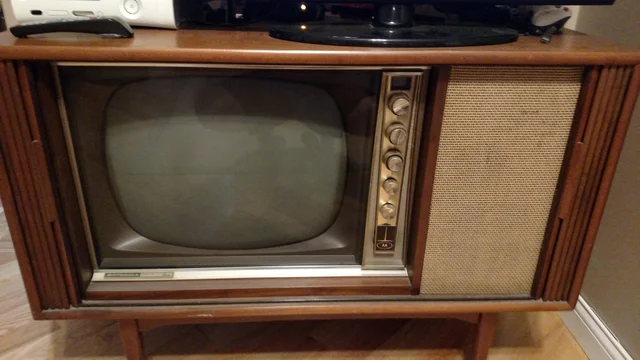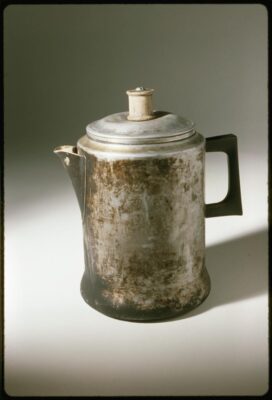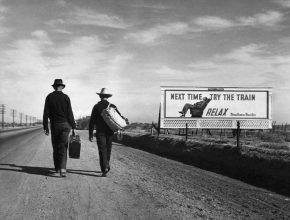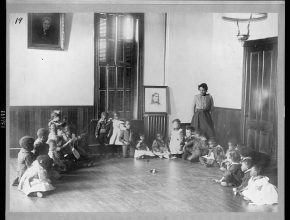Southern Legitimacy Statement As a native southerner and recovering Alabamian, I understand that we are definitely NOT living in a “Post-Racial” era. We have never spent enough time repairing the damage hundreds of years of slavery and discrimination have done to our collective psyches to be able to boast, honestly, such a testament. So, to try to bring us closer to such a day when Race doesn’t carry the toxicity it does now, I write of my past, the troubles I felt and encountered and still encounter today, and I do so as someone who loves his home area and will always feel justified in offering critiques of that “place.”
In Living Black and White
In Terry Zwigoff’s 2001 film adaptation of Ghost World, a young woman, discovering that an older friend has a racist poster from an earlier era—a gross caricature of a grinning black man—asks him if things are better today, regarding race, than “back then.” Her friend responds that he guesses things are better today, though our feelings are more hidden than in those old days.
I think about that scene often. I don’t believe we’re living in a post-racial society yet, and I wonder if we ever will be. In my senior seminar at Presbyterian College, I am leading students through a discussion of Racial Identity in modern American Literature. They will write research papers and make formal presentations on some aspect of this theme, be it within the popular arts or via religion and sociology.
As I guide my students, I tell them stories about my own upbringing in Civil Rights era Birmingham. It’s not that they disbelieve my stories, either. They understand that our racial divisions went deep in those days, but even in their understanding, we’re talking about a time some sixty years ago. When I was their age in the 1970’s, sixty years previous would have meant the era of World War One. Time and the past force us to consider stranger perspectives: all that life includes, and much that we still can’t believe though it happened before our very eyes. So I tell them this story to help, or perhaps disturb their minds.
——
As boys in the early 1960’s, my friend Steve and I used to battle over which afternoon TV show to watch. He preferred “The Popeye Show,” with Cousin Cliff Holman, and I preferred Benny Carle’s “Bugs Bunny Show.” I liked Cousin Cliff well enough, and Popeye was sort of funny—though I detested spinach then and still don’t feel too great about it today. Bugs Bunny, on the other hand, was wilder, and today I’d call him an anarchist. He undermined the status quo, even cross-dressing on occasion, and little did I know then that he also played into my Jewish sensibilities.
And Benny Carle, the host. I loved his zebra-striped coats, and though he smiled more than my dad did, they always reminded me of each other. The more I learned about Carle’s life, the greater the similarity, too. Both attended Ramsay High, and both played in the band. Both were ethnic others as well, though in those days, despite some underlying prejudice, both Carle and my father were clearly deemed “white, which made what happened on both Carle’s and Cousin Cliff’s shows both familiar and unsettling.
The era I’m describing would have been roughly 1960-64. Public integration had already been established by the US Supreme Court, though in Birmingham, its implementation was still years away. The conflicts and violence happening in Birmingham was for me still hidden, kept from me by loving and fearful parents. So when virulent racists bombed the 16th Street Baptist Church in 1963, my parents sheltered me from the tragedy and its aftermath.
What they couldn’t shelter me from knowing, though, was that I couldn’t go to Birmingham’s “Kiddie Land” any longer due to its being boycotted. They didn’t exactly explain what a boycott was, and so all I knew was that something I had taken for granted, a place I loved to go, was now forbidden. It didn’t occur to me then that such a place was more regularly forbidden to little black children.
What I did see and can’t forget was the children’s TV shows, and more particularly, the kids in the studio audience. Every day except Wednesday, that audience was composed of white children. On Wednesdays, and maybe just every other Wednesday at that, the audience peering back at me was black. I’m thinking now that the same composition was true for Wednesdays at Kiddie Land, and likely because in the South, Wednesdays were the day of the week when colored maids were traditionally allowed a half day off.
Worked in these moments into the normal stream of life, the black children, all dressed in their best Sunday clothes, acted just as the white kids did, applauding Benny Carle, laughing at the cartoons, and hoping to win their share of the prizes that Carle always gave away. As. Steve and I watched, however, what ideas boiled in our psyches? A reinforcement of segregation; an understanding that even in this happy world of afternoon kids’ shows, we were all too different to watch Bugs Bunny together?
It was like a virus, a contagion. Get too close and you’ll catch something. Or as, much later when I had kids of my own, my wife and I were warned at a car dealership by our salesman not to use the rest room because a black woman and her kids had just exited. That would have been in the 1990’s.
Did the TV crew clean the bleacher seats after the black kids exited? Sanitize the studio?
I appeared in the audience of three such shows, along with the other white children. I accepted the joys of going, never questioning the rotation of white and black, just as I never questioned Benny Carle’s striped jacket.
I don’t remember when these shows ended. By 1965, I had moved on to watching “Where the Action Is” each afternoon where the musical guests ranged from The Byrds to James Brown.
But I remember seeing those faces that I was not allowed to know staring back at me each Wednesday.
I want my students to see these images, too. They weren’t so long ago, after all. And their after-image still appears to me sometimes, a ghostly reflection of a time that some in our world would love to restore and possess—a hidden treasure, like an old black and white TV set.
